“A man’s house is his castle.”

– – James Otis, American lawyer
Today’s drive west from Kent in the S.E. to the county of Devon in the southwest (only Cornwall lies further west) will take us along the “Jurassic Coast.” The name comes from the best known of the geological periods found within it.
The drive will be one of the longest of the trip at five and a half hours and 275 miles. Our scheduled stop is the great Arundel Castle, with nearly 1,000 years of titled pedigree history. The castle is situated in magnificent grounds overlooking the River Arun in West Sussex; built at the end of the 11th century by Roger de Montgomery, Earl of Arundel. It’s now the current home of the 18th Duke and Duchess of Norfolk and their family.
Edward Fitzalan-Howard is the current Duke. All 18 past and present dukes are descended from King Edward I (you’ll remember him from Leeds Castle; in the 13th century, it came into his hands, becoming a favorite residence).
Many of Arundel’s original features, such as the Norman era Keep, medieval Gatehouse and Barbican (fortified gateway) survive. David wanted to know what the Keep was, so I told him that it’s basically the last chance for defense in a castle. We climbed up inside to check out the great views and imagine past battles of knights in their shining armor.


Man in Moat
The oldest feature is the motte, a huge, artificial mound over 100 feet high from the dry moat and constructed in 1068, followed by the gatehouse in 1070. The water has been drained and you can walk around the base of the castle as we did, admiring the solid and sheer immensity of the walls.
In 1846, Queen Victoria and her husband, Prince Albert, visited Arundel Castle for three days. Henry Howard, 13th Duke of Norfolk, remodeled the castle in time for her visit; a suite of six rooms were built on the second floor, which are now family bedrooms. Victoria’s portrait was also specially commissioned by the Duke in 1843 when Victoria was a youthful, radiant 23 years old.
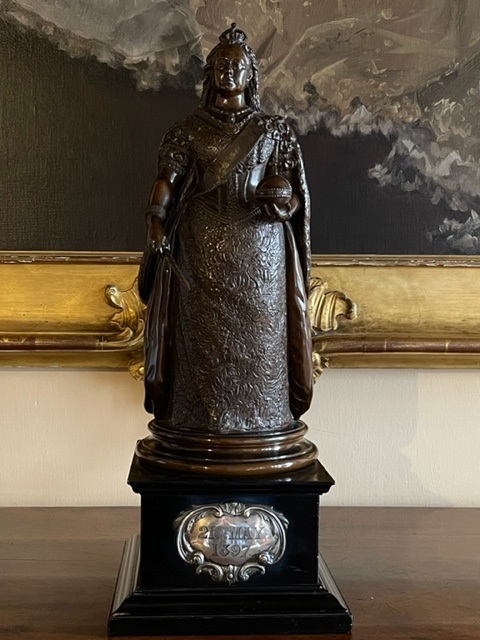
Queen Victoria, 1897 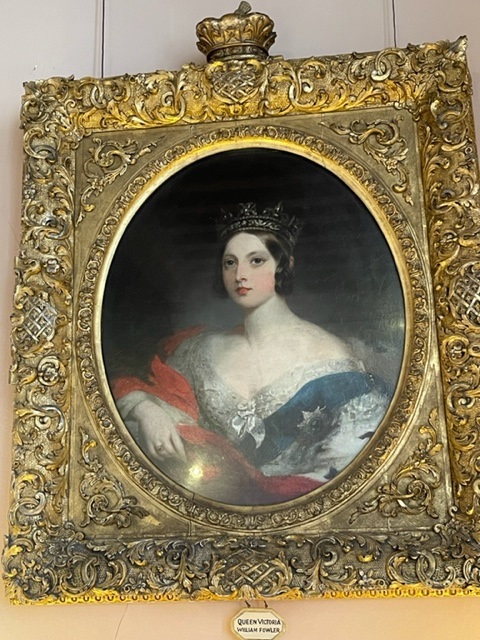
Between the 1870s and 1890s the house was almost completely rebuilt in Gothic style architecture, and is considered to be one of the great works of Victorian England. The finely preserved interior includes beautiful furniture, tapestries, and rare collection of masterpiece paintings by renowned artists including Van Dyck, Gainsborough, and Canaletto.
The building we see today owes much to Henry, 15th Duke of Norfolk (1847-1917) and his restoration project finished in 1900. It was one of the first English country houses to be electrified; service lifts and central heating were added.
Today, the home is still in use, but mostly for family holidays, and state functions. The residential part of the castle, which we were able to visit, included some of the bedrooms and very interesting bathrooms. The docent pointed that the bedrooms are always at the ready to receive guests. I told her I’ll be back tonight … she didn’t think it too funny, probably due to the recent break-in …
Sadly, the castle was broken into last year and a set of irreplaceable gold rosary beads, carried by Mary, Queen of Scots, to her execution in 1587, are among the many historic treasures that were stolen. I wondreth who so dareth climbeth the moat?
We moved from one richly appointed room after another with walls dripping with priceless artworks, and tables covered in objets d’art. My favorite room was the spectacular library richly outfitted with carved Honduras mahogany and deep crimson chairs. It’s considered one of the most important Gothic-styled rooms circa 1800 in England. I just wanted to select a book (from the massive collection of 10,000) from the wall-to-ceiling bookcases, plop myself in a chair and ring the bell for a cup of tea and biscuits!
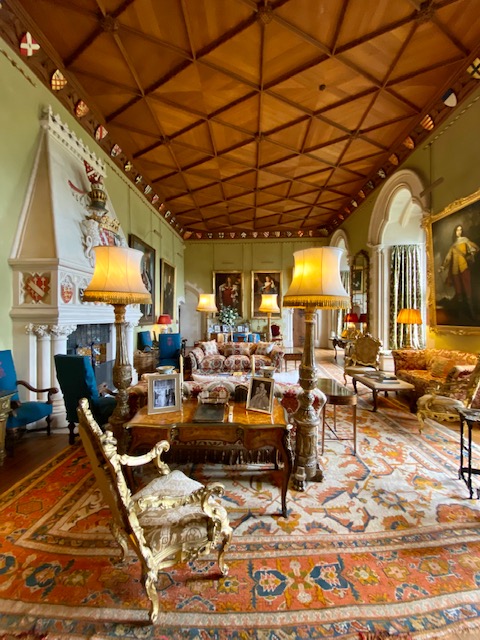

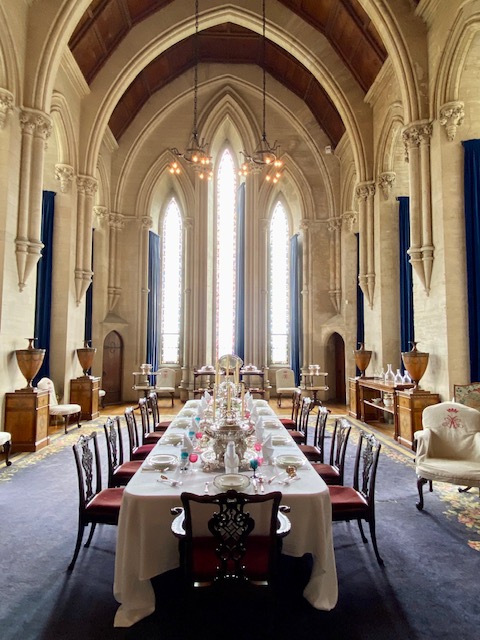

Lavish Library
Fortunately, it was the tail end of the tulip season. Arundel in April/May explodes with one of the largest displays of tulips in the country. The colors were dazzling and the fields of them was a sight to behold. Besides the gorgeous tulips, there were perennial purple and white alliums, geraniums, and busy bees buzzing about. It was still a bit early, but we could see that roses were getting ready to burst into bloom; a few early ones delighted.


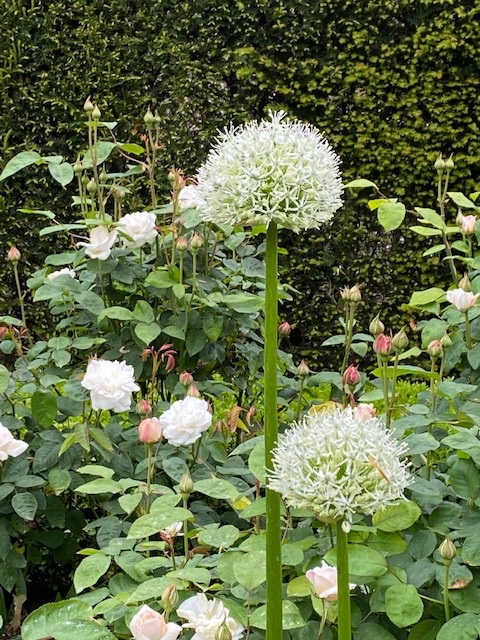
White Allium 

Purple Allium 

Succulent Flowers 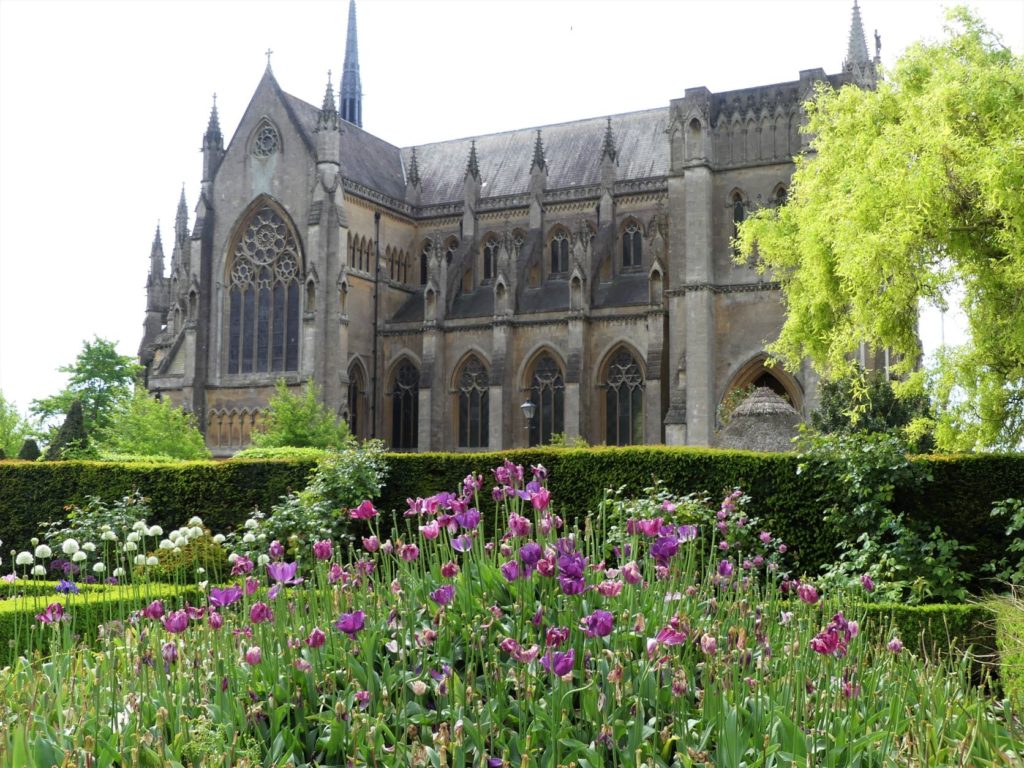
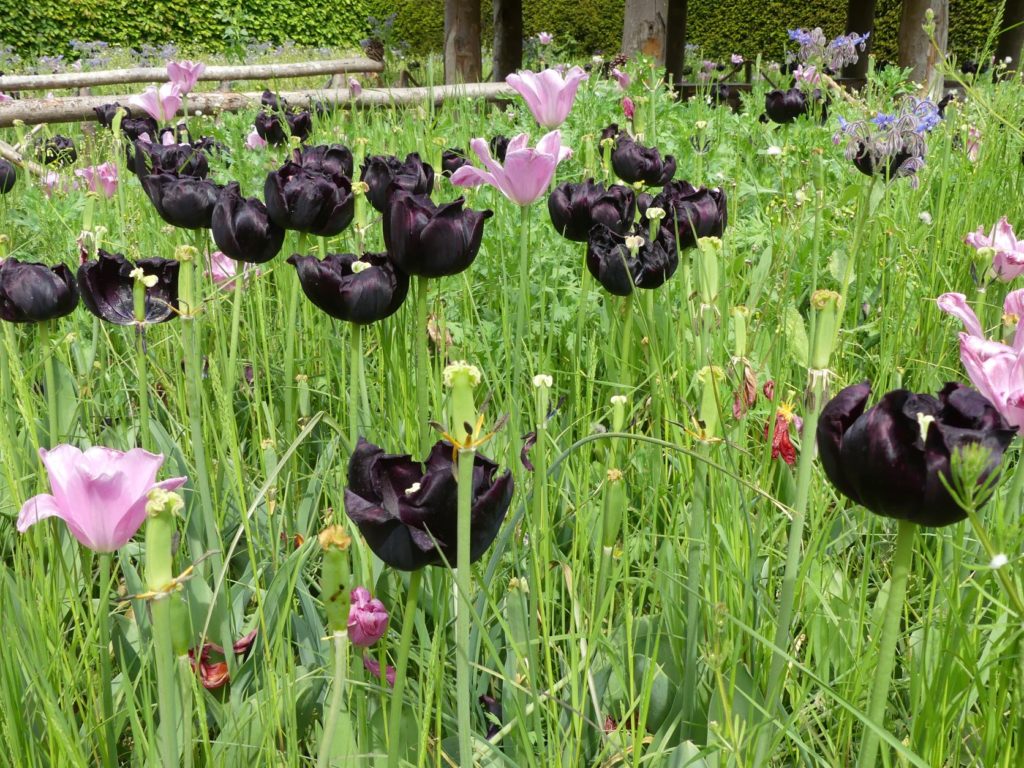
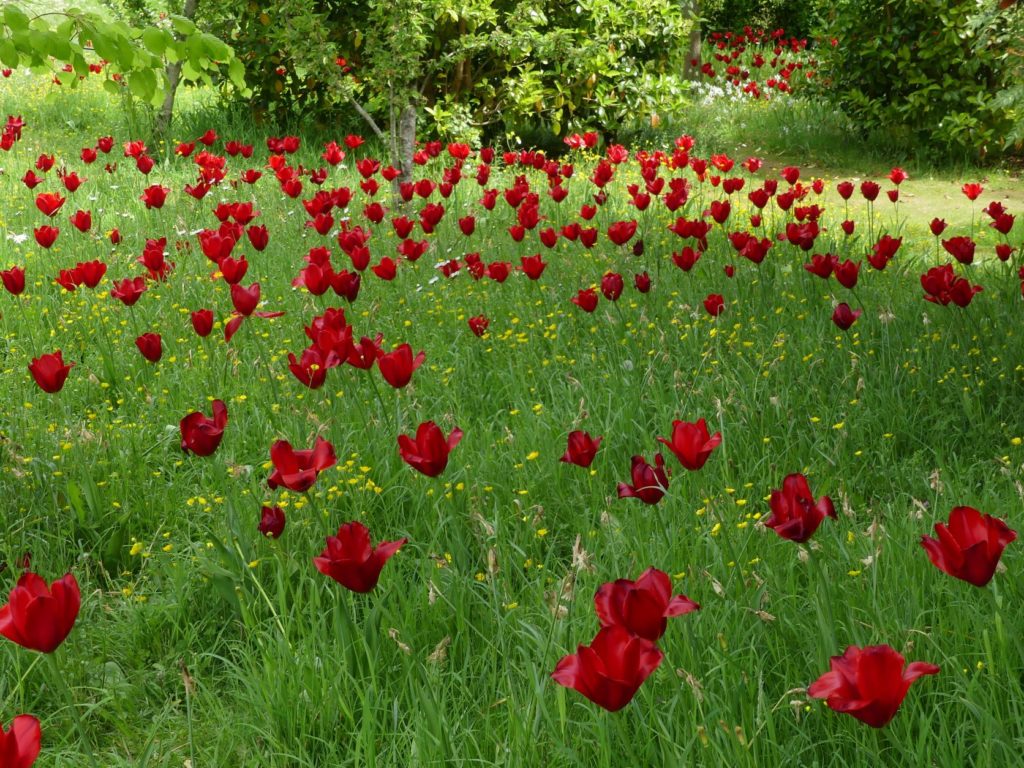

We continued through our garden stroll with few other visitors. Spring wildflowers were bountiful, and grasses and colorful ducks! David, camera in tow, snapping away, was working overtime discovering every little nook and cranny. There were wonderful surprises around each corner … fountains and water features were more recent additions. The Arundel Cathedral, closed today for a private event, provided a stunning background overlooking the calm and peaceful gardens.
Some smart English trivia … in addition to the ducal title, the Dukes of Norfolk also hold the hereditary position of Earl Marshal of England, a title the family has held for over 500 years. Earl Marshal duties include organizing major ceremonial state events such as the coronation of the monarch, funeral of the sovereign and opening of Parliament. He is among the four individuals who precede the monarch, and one of the two who traditionally walk facing the sovereign (thus backwards), but this hasn’t been practiced in recent years.
According to the House of Lords Act 1999, due to his duties as Earl Marshal, Norfolk is one of only two hereditary peers automatically admitted to the House of Lords, without being elected by the general body of hereditary peers.
They’re probably involved with the Queen’s Jubilee Celebrations, too. Royalty or nobleman by decree in England could not earn a living by working, so does Event Planner to Royalty count as work or just a passing hobby?
With another fulfilling castle visit under our belt, and feeling a little peckish, we walked into the quaint, small town of Arundel (pop. 3,400). It’s famous for its preserved Georgian buildings. We darted in ‘n out of shops until noticing across the square a bagel shop, Bagels and Coffee. So, you’re asking yourself, can the English do bagels? Not really. But, you know what they say: “…any port in a storm,” and our stomachs needed sustenance.
We ordered their regular cream cheese “schmear” bagel, and another with a Mexican twist, along with a “cuppa” (British slang for a cup of tea). Note for the future, please specify NO MILK, for unless you get a tea pot service, they’ll automatically add it to your cup. No me gusta.
Arundel is a charming town, and it’s worth a much longer visit in the future. Back on the road again, our final destination is Torquay, a seaside resort town, one of several dotting the south coast shores, known collectively as the English Riviera. It’s here we’ll be spending the weekend with my BFF, Jim, and his partner, Chris. No ancient castles to visit, but a modern one will do.




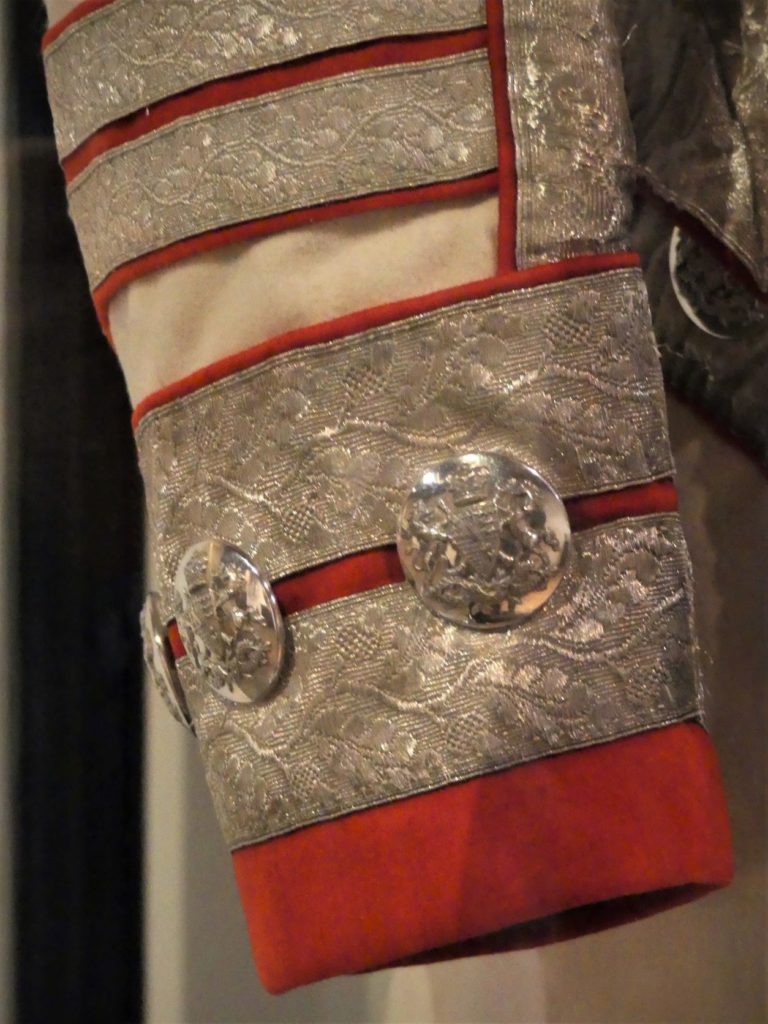
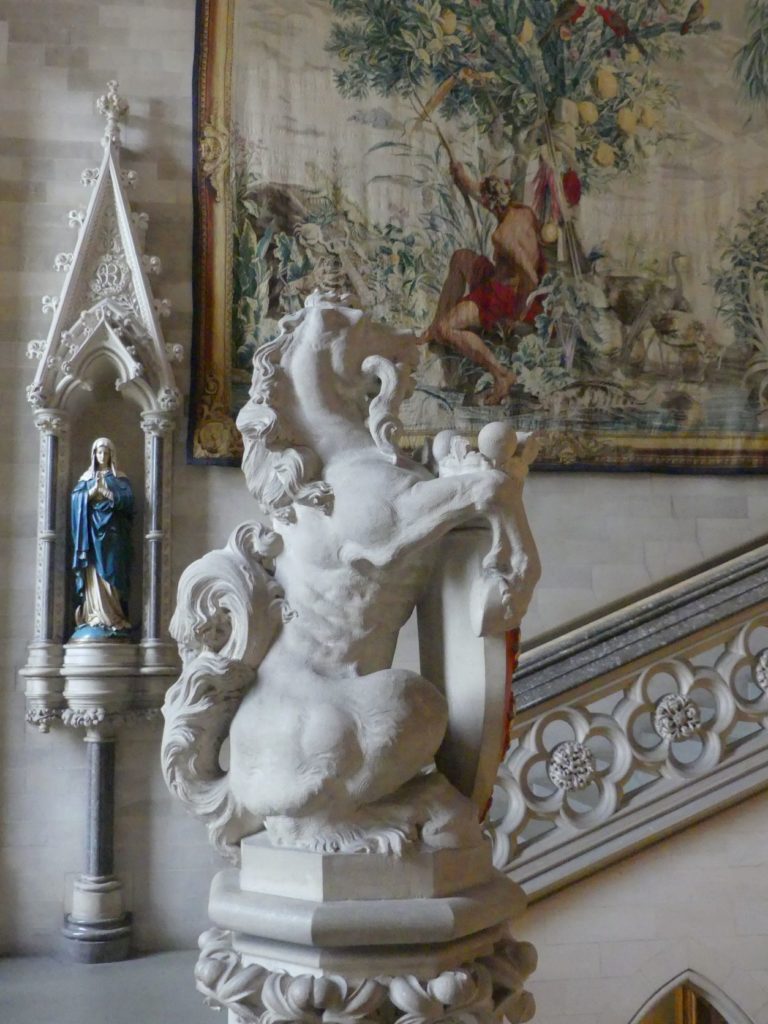


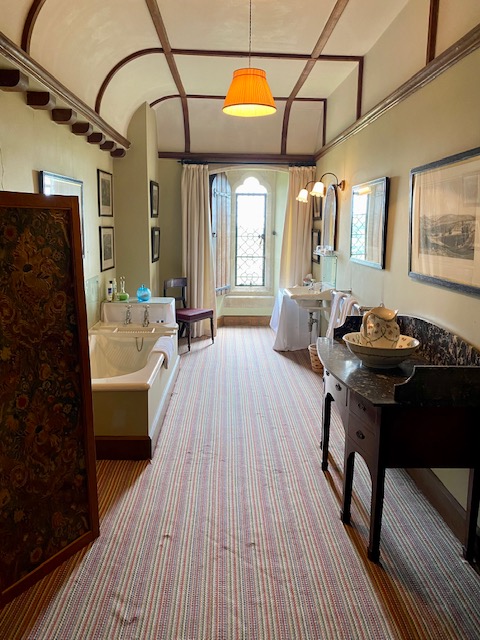

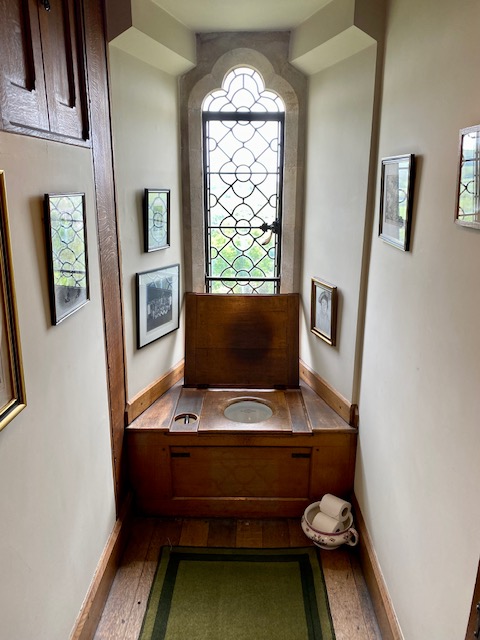
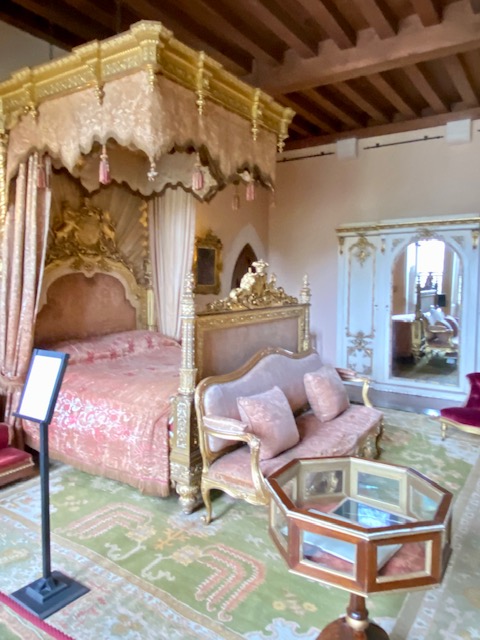

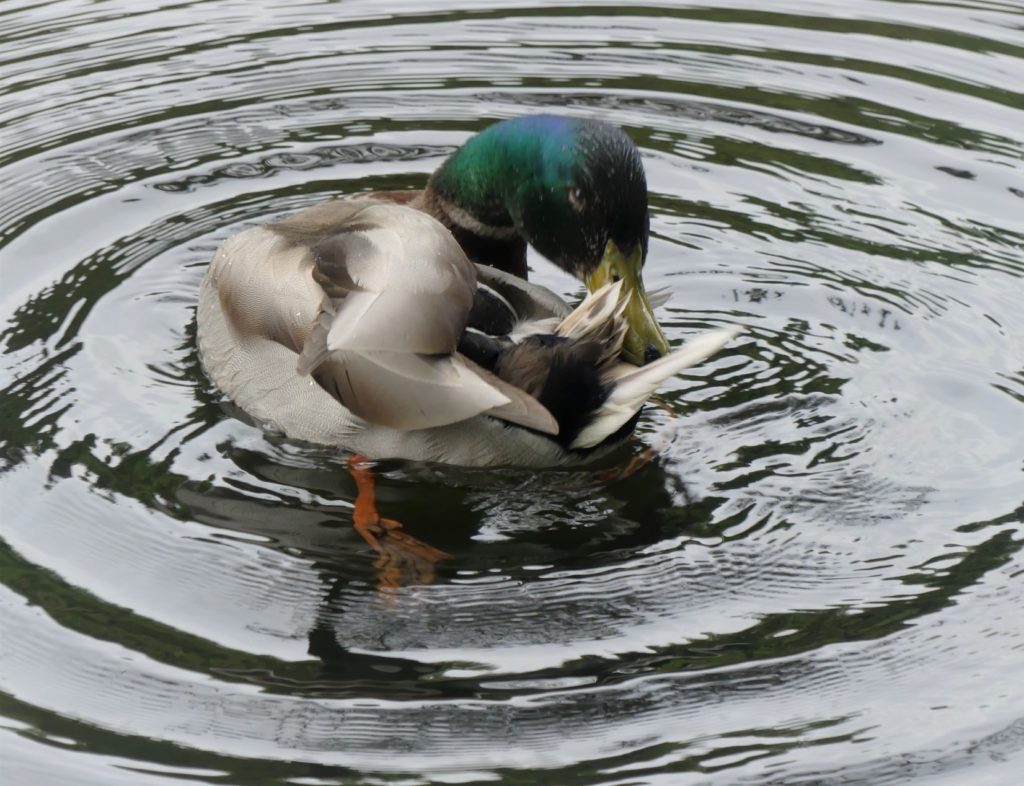


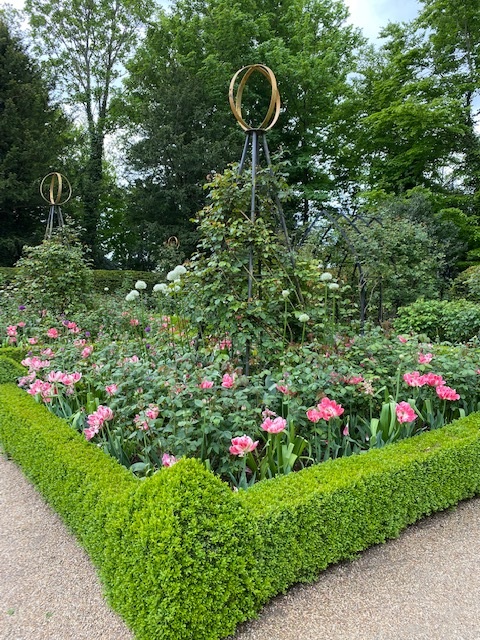



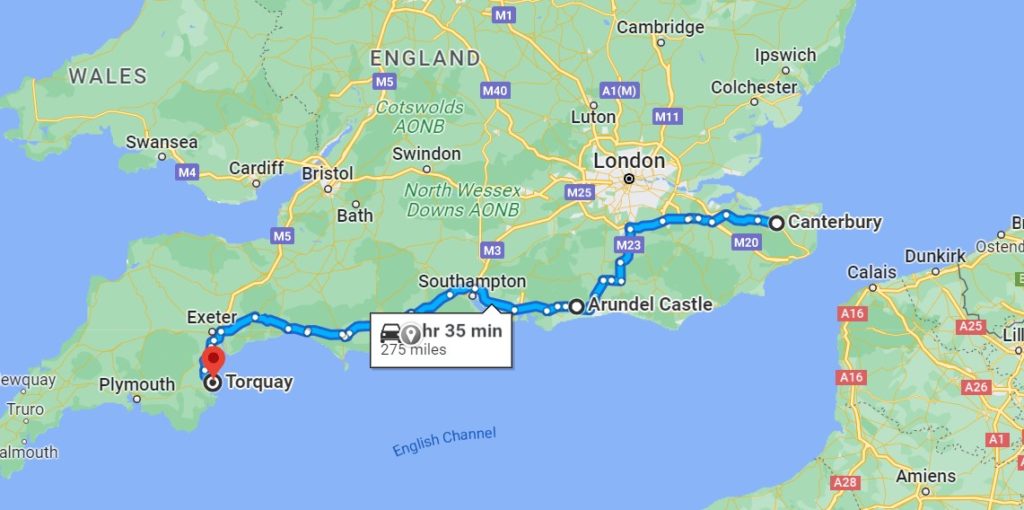
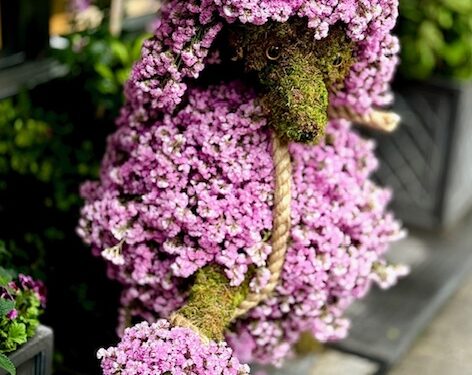


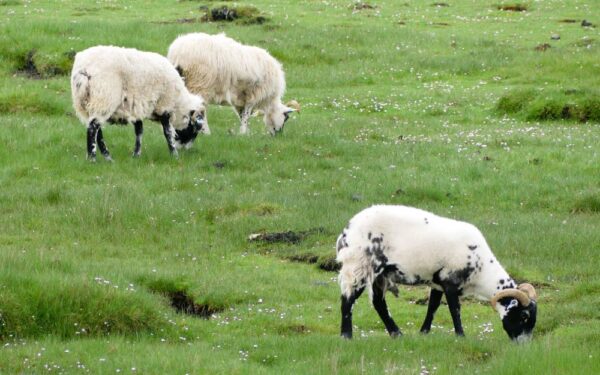
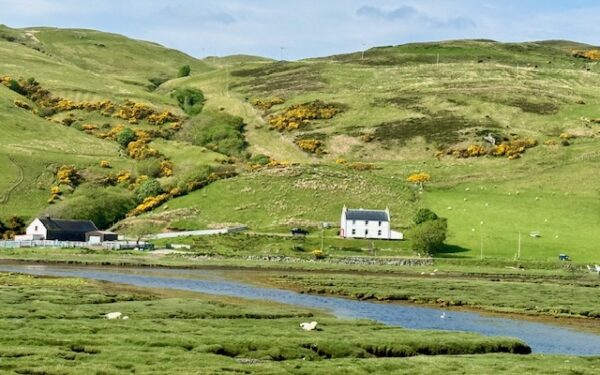
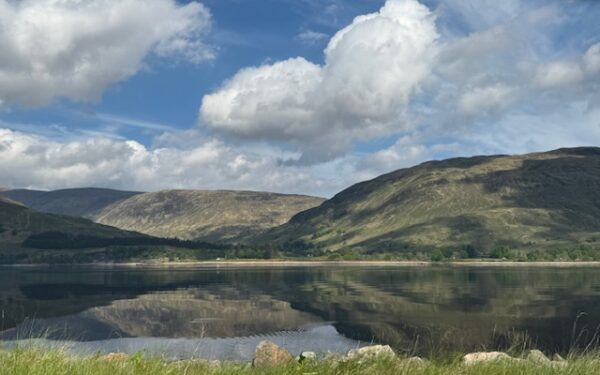
Gorgeous castle, grounds, flowers, and birds! You guys got some special treats in visiting this castle! Photos are amazing! Enjoy the rest of your stay. Say hi to Jim for us.
loved the i’ll be back later comment– that library- those ceilings- all the wealth is amazing-
still loving the vicarious ride- keep em coming-
I travel vicariously with you beautiful pictures. Thank you, Vickie
What wonderful photos of the gardens and castles. Thanks for getting me outside of my house and letting me join in your travels.